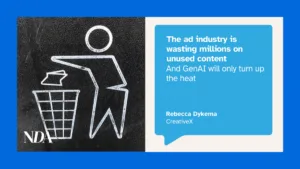by Inga Petryaevskaya, CEO and Founder of VR collaboration platform ShapesXR
XR (eXtended Reality) is a rapidly evolving technology with the potential to revolutionize the way businesses operate and market their products and services. By creating immersive and interactive experiences, VR (virtual reality), AR (augmented reality) and MR (mixed reality), can help businesses train employees more effectively, engage with customers more deeply, and improve their overall productivity and efficiency.
Last month’s Meta Quest 3 launch marked an important watershed moment for the industry. It represents another critical milestone in the development of MR and XR as a whole. Over the past few years, the industry has gained unprecedented momentum. Thanks to a boom in new creation and collaboration platforms it’s much faster, cheaper and easier to design XR. Now, new advanced devices are coming onto the market – like Quest 3 – which have a real chance of quickly becoming mainstream. In a few years, we may look at the launch of the Quest 3 as a device that is a marked step forward, leading to the transformation of XR and how people interact with the world.
One of the issues that has held back the XR industry has been the lack of platform providers and tools that make developing virtual experiences accessible and cost-effective. Thanks in no small part to an influx in funding and interest on the back of Meta going all in on VR and MR, a vibrant ecosystem has been created which has developed a range of solutions to solve these problems.
What would mainstream XR look like?
In a competitive and challenging economic environment industries are crying out for innovation to help reengage customers. For years, retailers in particular have experimented with both AR and VR to create new customer interactions. Their success has been limited because they lack the platforms and tools to do this in a cost and time-efficient manner and, without mainstream device adoption, their creations are largely confined to the in-store experience.
With that hurdle likely to be removed, we’re going to see an explosion in experimentation. To make this happen, brands, and the agencies that support them, will need to become skilled at becoming visual storytellers. Creating customer engagement in 3D is very different from a flat screen. It opens the door to a lot more possibilities but to realise them businesses will need to hire or upskill their teams to be able to use design platforms effectively and also construct engaging narratives.
XR experiences will also need to be incorporated into other marketing channels to create the seamless, personalised communications people now expect. This will require, in the long term, a reorganization of marketing departments and the adoption of new tech to make it happen. Thankfully hand in hand with the growth of spatial computing and VR/MR headsets in particular has been the advent of composable architecture, which makes adapting your tech stack much much easier.
The same will be true for gaming development and the entertainment industry. We’ve already seen concerts with holographic performers so it’s very easy to imagine all the possibilities of producing plays, music festivals, TV shows and movies on VR, AR or MR.
B2B in 3D
Consumer-facing applications of XR are just the tip of the iceberg, we are actually likely to see the most compelling use cases first appear within B2B. For example, with workforces increasingly dispersed and hybrid working remaining popular, XR offers an exceptional way to bring teams together for project collaboration – everything from designing new products to developing event spaces. Indeed, for B2B businesses XR’s greatest promise is in making collaboration and upskilling more efficient and effective.
We haven’t even touched upon the Metaverse, or metaverse-style connected worlds, that could transform how we perceive and use the internet. Everything from social media to buying products and managing our finances could get the XR treatment.
For a lot of businesses getting to grips with the opportunities afforded by XR will start with education. The use cases that will have the most impact on your business are likely to be underreported, given so much media attention is drawn to visually appealing applications like new games. Reading up on the different platforms and services that are available will give you a great understanding of what could make a difference for your company. As I’ve mentioned, developing XR services and experiences has become a lot easier, so there’s nothing to say you cannot create or adapt a solution to meet your needs.
The final part is the willingness to experiment. Creation on the ‘spatial’ internet looks and feels a lot different from creation in 2D. Having platforms that enable new 3D experiences to be created in 3D changes the game because it allows us to see what these experiences will actually look like and that allows your imagination to run wild. The act of designing, for example, 3D extensions to physical or web-based products will catalyse more innovation. We genuinely don’t know what the ‘killer use case’ for XR will eventually be – the business that discovers it will reap extraordinary benefits.
I also have to mention generative AI – no article would be complete without it. Generative AI will play a huge role in reducing the cost and time involved in creating VR experiences. While it’s not quite fit for purpose yet – there’s no denying that it will play a big role in the future of the industry.
XR is not just a “gimmick” anymore. I may be biased, but it feels like it will be one of the biggest disruptors to our everyday life – whether it is work or leisure. And the fact that companies such as Meta are heavily investing in this sector says a lot. If the world continues to head in this direction, businesses will need to embrace XR to have a competitive advantage, and marketers will need to use it to reach their target audiences.







